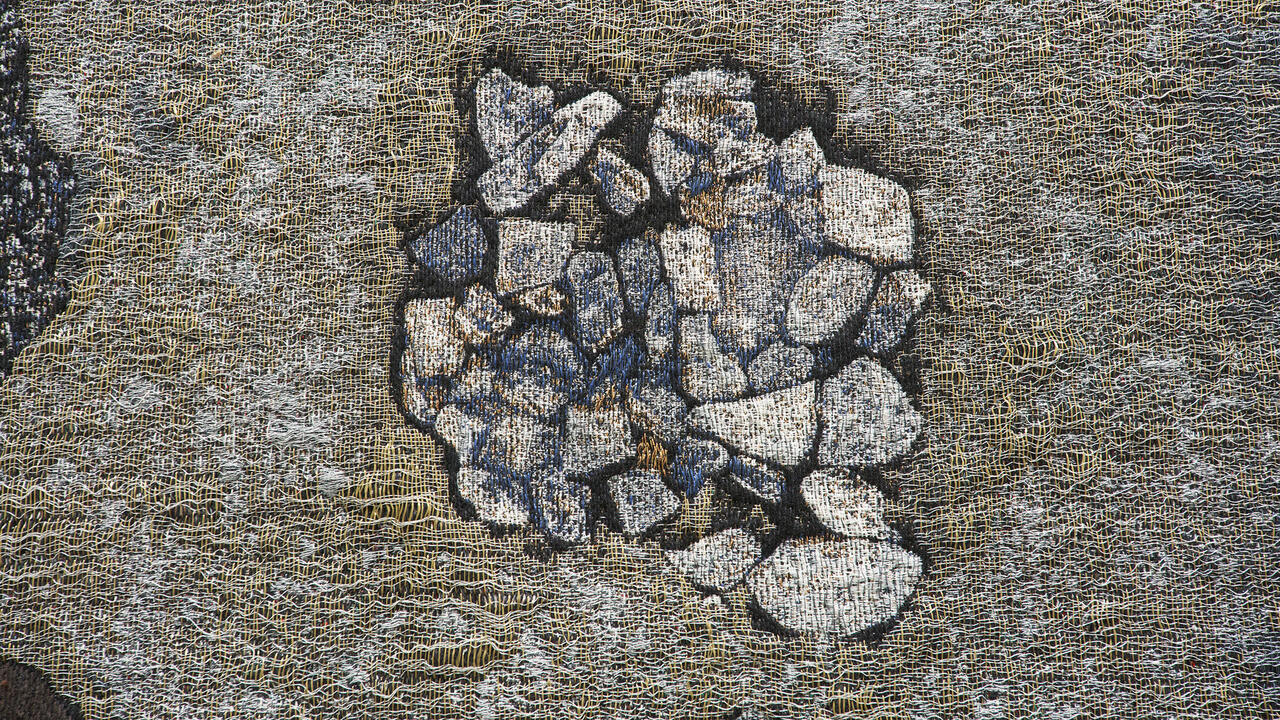Secrets Burrow in Siji Krishnan’s Landscapes
In her new exhibition at Michael Kohn Gallery, Los Angeles, the artist inflects pastoral environments with raucous action
In her new exhibition at Michael Kohn Gallery, Los Angeles, the artist inflects pastoral environments with raucous action

English professors will tell you that Shakespeare is funny, but his jokes often elude my grasp: his complex verse can cloud the immediate comedy of his plays. A similar difficulty underscores Siji Krishnan’s solo exhibition at Michael Kohn Gallery, aptly titled ‘Liminal Spaces’. Krishnan’s luminous, sun-drenched palette and quick, sculptural brushwork belie the slapstick, sexy tableaux that hide in plain sight; in them, animals, prostitutes, parents and children coexist within dramatic natural oases. Drawing from traditions of landscape painting and Indian craft – her ‘canvases’ are often made from multiple layers of dried rice paper – Krishnan inflects pastoral environments with slyly raucous action, her compositions slipping between wit and refinement.
Unpopulated views based on Krishnan’s native Kerala cast a deceptive tranquillity over the gallery. The yellows, teals and beiges of the artist’s palette lend paintings like Home (2023–24) an internal radiance, though a closer look reveals a surreal, busy scene. Streams of sunlight surround a thatch hut that hovers in mid-air; a small creature – perhaps human, perhaps not – nestles within. Secret lives burrow inside Krishnan’s landscapes: noticing them feels like finding a dollar bill in your pocket. In Your land and my flowers (2023–24), for example, watercolours bleed across rice paper to depict a near-abstract panorama of a paddy field. Krishnan conceals miniature wildlife dramas within the peaceful scene: birds and deer hunt and breed, painted in quick, sharp strokes that emanate a Cy Twombly-esque sense of play.

The fluctuations of the natural world shape the rural communities in Krishnan’s compositions, tossing them into disarray. A Blast (2024) – which, at a little more than four metres wide, stretches nearly the full length of one gallery wall – features a village disrupted by an explosion at the centre of the canvas. Details reveal Krishnan’s comic touch: nude figures cling to each other, suddenly exposed, while a monkey chases an upside-down umbrella. A similar tonal range infuses Unknown families (2022), which mingles a tropical landscape with a quirky, debauched party scene. A half-naked figure smokes a cigarette in one hand and holds an empty birdcage in another, and a clown on a bicycle carries a fish in its basket, cycling furiously away from a swirl of palm fronds depicted mid-fall.
Away from the village’s social world, though, deviations from social norms feel lonely and serious. In Saying bye (2023–24), a nude, pregnant mother-to-be stands on top of a mound filled with children’s toys – and actual children, their limbs and heads poking from the heap. Speedy, effervescent brushstrokes typically mark movement in Krishnan’s work, but here the action takes on a stuttering, staccato quality: the woman waves from her perch, the motion evoked by repeated drawings of her moving hand. These portraits trouble normative expectations, but their defiance is not joyful: Pregnant father (2022–23) depicts a sombre male figure sitting alone on a bed, his stomach protruding in silhouette. In isolation, these departures from the status quo feel newly weighty, sequestering individuals from the lush, wild environments that characterize the rest of Krishnan’s work.

To be or not to be (2023–24) derives its title from Hamlet (c.1600), classified by literary theorist Frederick S. Boas as one of Shakespeare’s rare ‘problem plays’ for its defiance of genre conventions and lack of dramatic resolution. Krishnan’s rice-paper painting depicts two nude young people gazing out at the viewer from what resembles either a makeshift stage or a wedding arbour. The artist renders the couple in light, cheery strokes, but the potentially festive scene feels depressed, as though an outside force has compelled these adolescents to perform. Though humour swells below Krishnan’s work, the ‘problem play’ may be a more suitable category for her elegant, tragicomic compositions, which leave their tonal conundrums up to her audience’s discretion.
Siji Krishnan, ‘Liminal Spaces’, is on view at Michael Kohn Gallery, Los Angeles, until 8 June
Main Image: Siji Krishnan, A Blast, 2024, watercolour on rice paper, 1.3 × 4.3 m. Courtesy: the artist and Michael Kohn Gallery, Los Angeles; photograph: Karl Puchlik
























